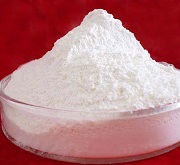Bisphenol A (BPA) is an important industrial chemical that is used primarily to make polycarbonate plastics and epoxy resins. Naturally, the magnitude of the application of the latter opens up a huge potential for BPA use in multiple areas, including optical media, construction, leisure, protective accessories, cars, healthcare, packaging, to name just a few.
The situation on the Asian bisphenol A market in the early Q2 of 2019, which is a major segment of the global BPA market, is rather stable, though this stability has a general downward pressure. It is in fact supported by the ample supply of the feedstock materials, phenol, and acetone, whose prices are also rather steady at the moment. However, the current slowdown of the Chinese economy and other fiscal issues in the country may take its toll, thus affecting both production and demand.
Bisphenol A: structure of the global capacity by region

The situation on the third largest global BPA market, the North American market, is quite different. First, the market is affected by the tight supply, primarily from the phenol sector, which is hit by logistics and force majeure issues. Second, the continuation of the force majeure circumstances at Hexion’s 140,000 mt/y plant in Deer Park is detrimental (in addition, the company operates a 160,000 mt/y plant in Pernis, Netherlands). All these may lead to an increase in bisphenol A prices in the US.
Unlike logistics and costs fluctuations, which are part of the everyday market milieu, the significant blow to the BPA market may come from another direction. Numerous researches, including very recent ones, link multiple serious diseases, like childhood asthma, allergy, obesity, and eczema, to certain environmental chemicals, such as bisphenol A, used in personal care products and plastics. These narratives have quite a long history, but it seems that the weight of the recent epidemiological findings may one day act as a tipping point which will lead to the introduction of severe measures in relation to bisphenol A. Currently, there is no scientific consensus on this and the results are mixed. However, the initiatives undertaken in 2018, like the re-evaluation of bisphenol A hazards by the European Food Safety Authority, may turn the tables on the pro-bisphenol lobby.
More information on the global bisphenol A market can be found in the insightful study “Bisphenol A (BPA): 2019 World Market Outlook and Forecast up to 2028”.
